Chatbots have progressed dramatically in recent years.
In the past, they were basic support tools that could only handle FAQs or routine customer inquiries.
Now, that’s all changed.
Thanks to advancements in artificial intelligence technologies, such as conversational AI and Natural Language Processing, customer service chatbots have evolved to become sophisticated virtual agents.
These AI-powered systems can automate complex queries and a much wider range of customer interactions and tasks, leading to significant efficiency gains.
In fact, AI chatbots effectively handle 65% of B2C communications now, and overall chatbot usage has increased by 92% since 2019.
However, as the technology advances, so do customer expectations.
Meeting the demands of modern consumers can be challenging in a post-ChatGPT world.
That’s why we’ve put together this guide - to help you optimise your chatbot’s performance and deliver the best customer experience possible.
We’ll cover...
- Benefits of an effective chatbot for business and customers
- Top 10 chatbot best practices
- Getting started with AI customer service chatbots
TL;DR:
10 Best Practices for Customer Support Chatbot Development...
- Define your chatbot’s role & objectives: Clearly outline your chatbot's purpose and goals in the customer journey to ensure it supports business needs (e.g. customer support, marketing campaigns, etc.) and delivers valuable outcomes.
- Design for user experience (UX): Prioritise an intuitive and visually appealing design with smooth conversation flow, quick response times, and clear escalation options.
- Leverage Artificial Intelligence & Large Language Models (LLMs): Implement LLM-powered chatbots for smarter, more intuitive user interactions that handle complex customer service inquiries and maintain conversation context.
- Build a comprehensive knowledge base: Create a centralised knowledge base to provide consistent, accurate information, ensure relevant responses, and improve chatbot performance over time.
- Integrate with existing systems & platforms: Ensure your chatbot seamlessly integrates with your CRM and backend systems to create a unified user experience.
- Complement AI automation with human support: Enable smooth transitions to human agents when needed to enhance user satisfaction and customer engagement.
- Protect user data & ensure compliance: Prioritise data protection, compliance with industry regulations, and regular software updates to maintain customer privacy and trust.
- Deploy across multiple channels & touchpoints: Strategically deploy your chatbot on channels that align with user preferences for maximum reach and impact.
- Conduct testing sessions: Test your chatbot extensively in different scenarios to identify issues, improve usability, and ensure seamless performance across platforms.
- Continue to monitor & improve performance: Track key metrics, refine the knowledge base, invest time into AI management, and gather customer feedback to continuously optimise chatbot performance.
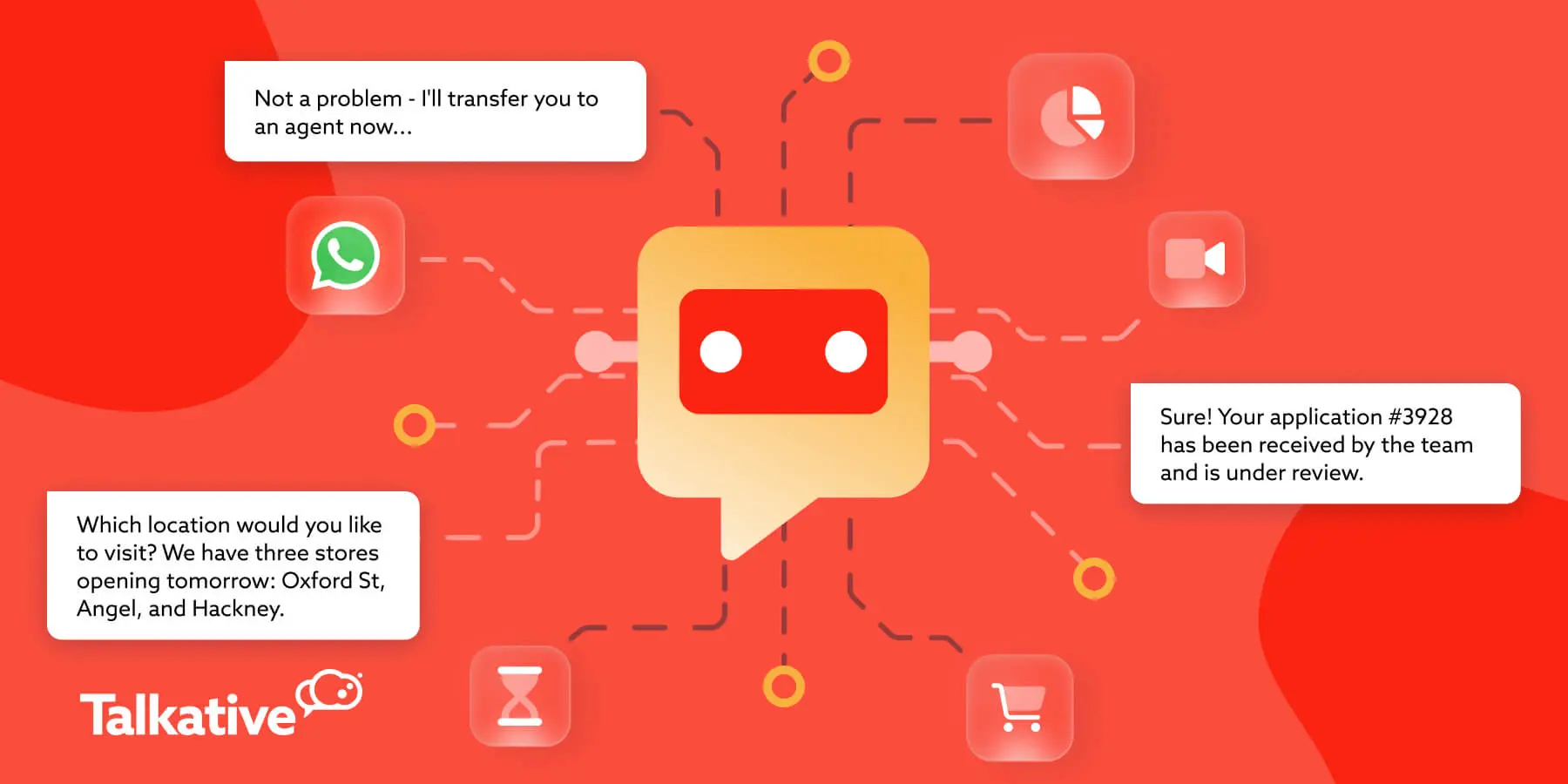
What are the benefits of a successful chatbot?
Before we dive into chatbot best practices, it’s worth covering the perks you’ll gain by adhering to them.
AI chatbot solutions can benefit businesses and customers in the following ways…
Round-the-clock accessibility
Unlike human agents, customer service chatbots don’t need sleep or days off.
Instead, they can be available 24/7, ready to assist customers and website visitors at any hour and handle multiple conversations simultaneously.
This is especially beneficial for global brands with customers scattered across different countries and time zones.
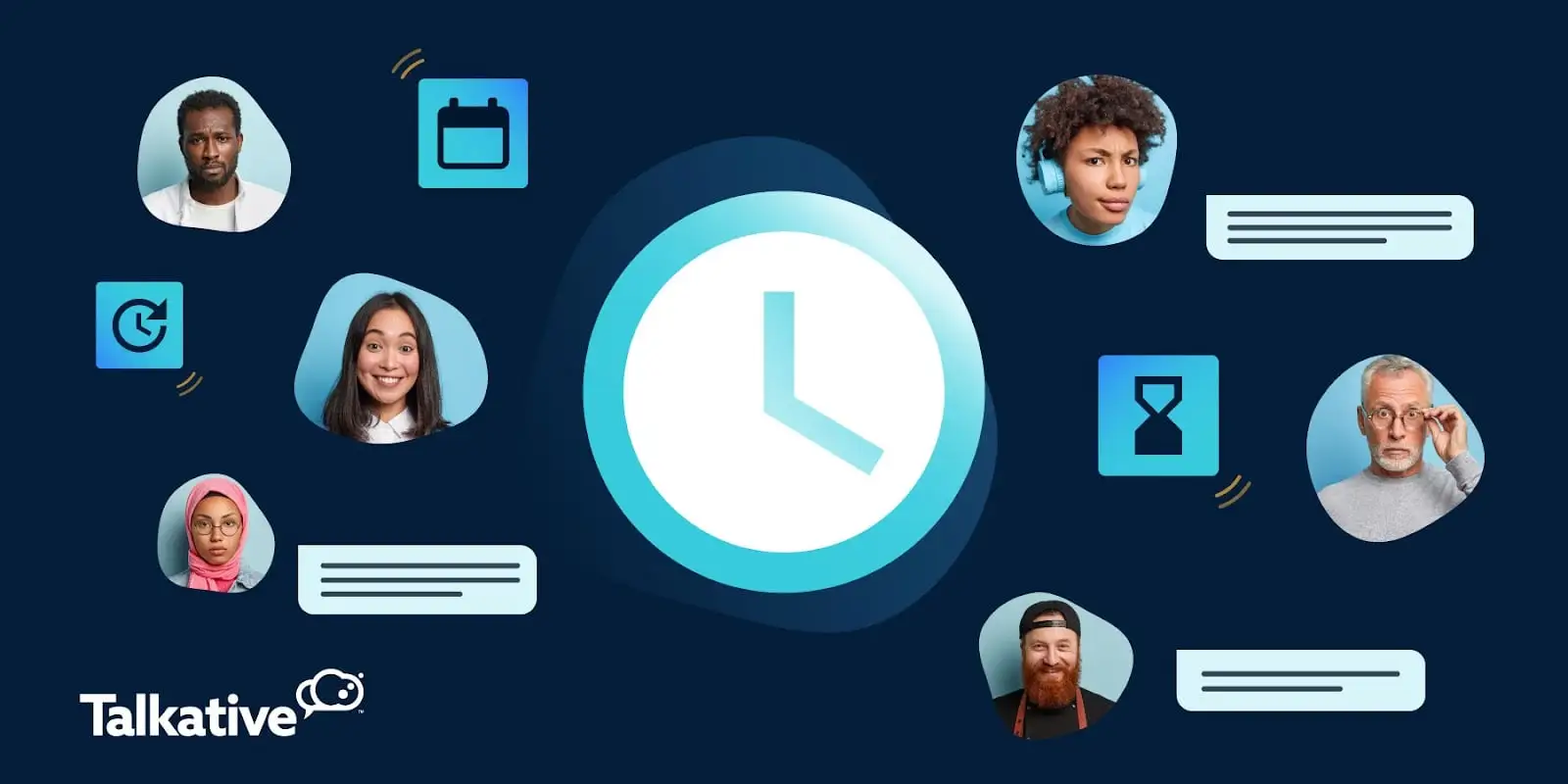
Improved operational efficiency
AI chatbots streamline customer interactions by providing advanced, automated support.
This not only reduces agent workloads but also alleviates the strain on other communication channels.
In fact, virtual assistant bots reduce query volume by up to 70% across calls, live chat, and email.

Instant responses
Fast and efficient service is vital for maintaining customer satisfaction and a positive customer experience.
Customer service chatbots excel in this area because they have accelerated processing and provide instant responses.
On average, they reply to users three times faster than human agents.

Increased customer satisfaction
Chatbots offer a convenient and effective way for customers and website visitors to access self-service, empowering them to resolve many issues independently.
This improves customer engagement, enhanced the customer journey, and boosts customer satisfaction scores by catering to the 81% of consumers who want better self-service options.
It also decreases the number of cases that require human intervention.

More online sales & leads
Chatbots aren’t just tools for automating customer service.
They can also play a significant role in driving revenue and growth.
Some business leaders have reported a 67% increase in sales through chatbots, and 55% of companies see an increase in high-quality leads after deployment.

Reduced costs
AI customer service chatbots have been shown to cut costs by 30%.
They achieve this by automating user interactions and various tasks (e.g. booking appointments), helping you save time, resources, and money.
Vadim Belski, Head of AI and Principal Architect at ScienceSoft, an IT consulting and software development company, says:
"With 160 support hours a week and a U.S. median CSR wage of $20.59/h, automating 50% of customer inquiries brings about $85,700 in annual labor cost savings. For a typical information-support or scheduling chatbot, implementation starts at around $70,000, with ongoing maintenance from $5,000/month. That means net savings usually turn positive from the second year onward. At 75% automation, yearly savings may reach $128,500 gross, or about $68,500 net after service costs.”
This demonstrates that chatbots offer a cost-effective solution for scaling operations - especially compared to hiring additional agents.
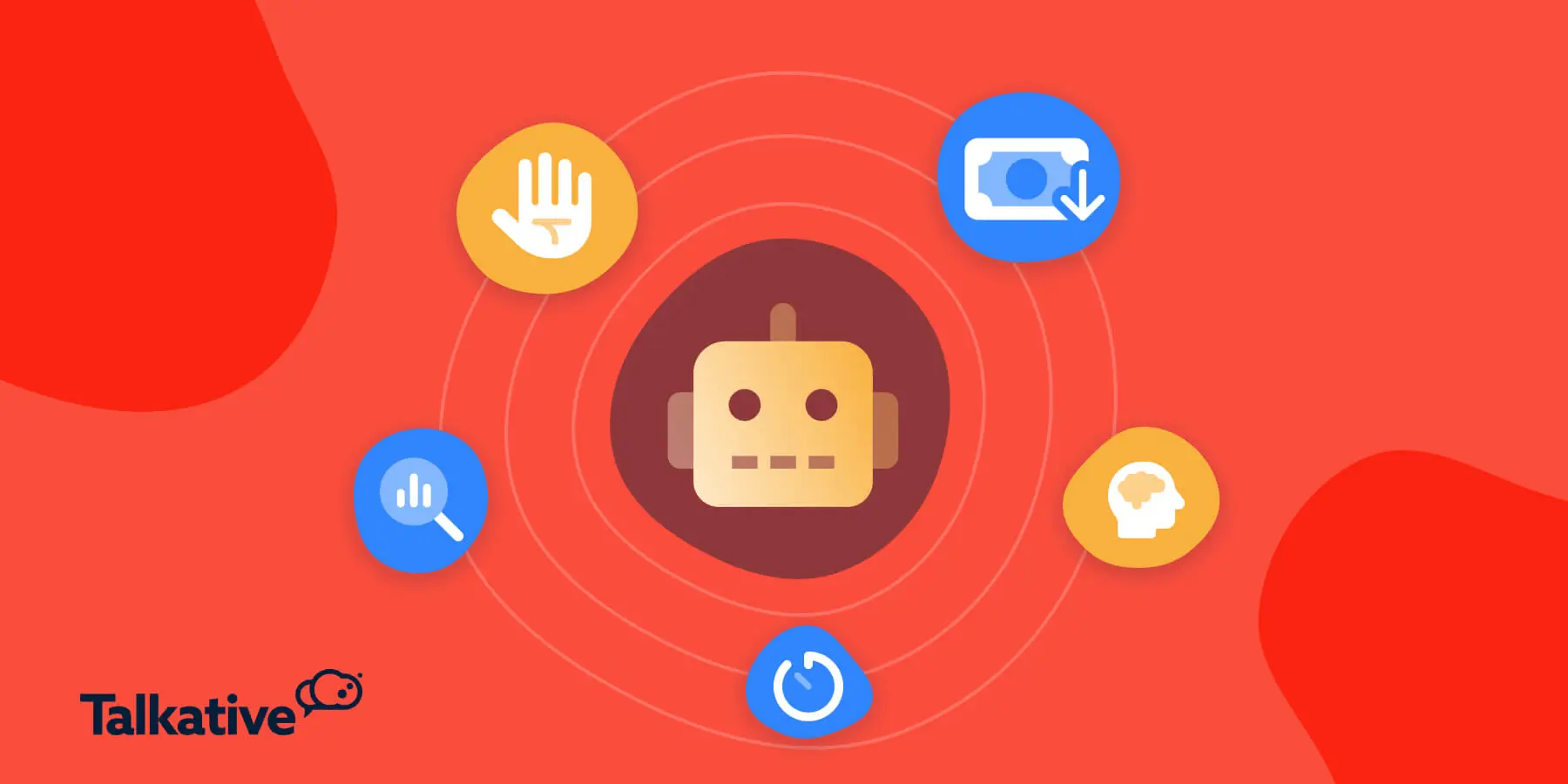
What are the 10 best practices for chatbot development?
AI customer service chatbots must be implemented and used effectively if you want to gain the potential benefits.
The following chatbot best practices will help you achieve optimal results.
1. Define your chatbot’s role & objectives
It’s crucial to have a clear understanding of what you want to achieve with your own chatbot.
Setting clear objectives will guide chatbot development, design and functionality, ensuring it meets the needs of your business and customer expectations.
Start by defining your AI chatbot’s primary role.
Is it to provide customer support, drive sales and lead generation, expand your marketing channels, or something else?
Once you’ve established its purpose, outline the specific goals you aim to accomplish and pain points you hope to resolve.
These might be improving response times, increasing customer self-service, reducing support costs, creating a chatbot marketing strategy, improving marketing campaigns, or boosting website engagement.
Next, decide on the key tasks your chatbot will handle.
Identify the customer service queries or processes that can be automated, and ensure your chatbot is trained to handle them and guide users effectively.
By defining the chatbot’s role and objectives clearly from the start, you’ll create a solution that delivers meaningful outcomes and supports your business goals.
Take Talkative customer and leading supplement retailer, Healthspan as an example.
They decided that automating product-related customer queries would be the main role of their chatbot, even naming the bot “Product Professor".
By focussing on this objective and creating a comprehensive product knowledge base (more on this later), they were able to set a clear implementation plan.
This strategy ultimately helped them achieve an 90% AI resolution rate with Talkative’s chatbot solution.
It also streamlined Healthspan’s support system, freeing up agents to focus more on cases needing human expertise.

2. Design for user experience (UX)
Once you’ve set clear goals for your AI-powered chatbot, it’s time to think about how you want it to look and act.
Well-designed and user-friendly customer service chatbots can significantly enhance the customer journey.
Poorly designed bots, however, can confuse most customers, leading to frustration and a negative chatbot experience.
This is where the User Experience (UX) design comes into play.
If you want to provide an engaging and on-brand UX, you should look for a chatbot provider that offers granular customisation.
This is important for your chatbot’s look and feel, and for the conversational experience it will deliver.
On the first topic, look for a chatbot platform that provides a sophisticated chat widget editor.
That way, you’ll have full control over your chatbot’s visuals and branding.
When it comes to mapping the actual user experience, it’s wise to test platforms that provide you with a conversational flow builder.
Take Talkative’s no-code chatbot builder, for instance.
This feature allows you to use generative AI responses and steer the customer journey without any coding skills required.
From there, make sure you consider the following for a smooth and efficient UX design process:
- Consider conversation flow: Map out user journeys and the chatbot’s conversational flow. Include fallback options and action buttons (e.g. "Speak to a human") as well as message responses that greet users and guide users through interactions.
- Design a user-friendly interface: Ensure the chatbot’s interface is visually appealing, easy to navigate, and accessible across devices.
- Be upfront with users: Clearly communicate the chatbot’s limitations and be transparent about whether users are interacting with a bot or a human.
- Ensure accessibility: Prioritise accessibility with features like real-time translation for multilingual customers and compliance with the Web Content Accessibility Guidelines (WCAG).
- Optimise speed and efficiency: Minimise response times and enable quick access to key information and actions.
- Maintain brand consistency: Ensure the chatbot’s tone and language align with your branding and deliver a consistent experience across all touchpoints.
- Include escalation options: Provide a seamless way to escalate the conversation to a human agent if needed (more on this later).
- Create the chatbot’s personality: If appropriate, craft a unique personality for your chatbot that reflects your brand’s values and resonates with your target audience.
- Test your UX: Before the chatbot goes live, run concept validation testing to confirm that your UX design appeals to your target audience. This upfront check helps ensure your chatbot experience is on-brand and user-friendly, setting you up for success.
By carefully crafting your chatbot’s UX, you can ensure it serves as a helpful, engaging, and trusted resource for your customers.

3. Leverage Large Language Models (LLMs)
If you want your chatbot to understand more complex user queries and respond in a human-like manner, you should find a solution that leverages LLM technology.
Large Language Models (LLMs) are advanced artificial intelligence systems powered by technologies like generative AI and Natural language Processing (NLP).
These models can produce text, answer questions, create content, and perform a wide range of language-related tasks based on the user input they receive.
LLMs make chatbots smarter, more intuitive, and capable of understanding customer intent and handling complex customer queries in a human-like way.
It also allows them to maintain context and coherence throughout customer interactions, creating a more seamless and satisfying user experience.
With this in mind, you should consider implementing a chatbot solution that incorporates LLMs and generative AI.
Leveraging this technology will significantly improve your chatbot’s capabilities and efficiency gains.
It’s why Talktive’s GenAI chatbot supports integration with multiple LLMs, including:
- GPT-3.5 GPT-4, GPT-4o
- LLAMA-3 (70B)
- LLAMA-3 (80B)
- Claude Haiku
- Claude Sonnet
- Google Gemini 1.5 Flash
- Google Gemini 1.5 Flo
Embracing LLM chatbots will also position your business at the forefront of innovation, potentially giving you an edge over your competitors.
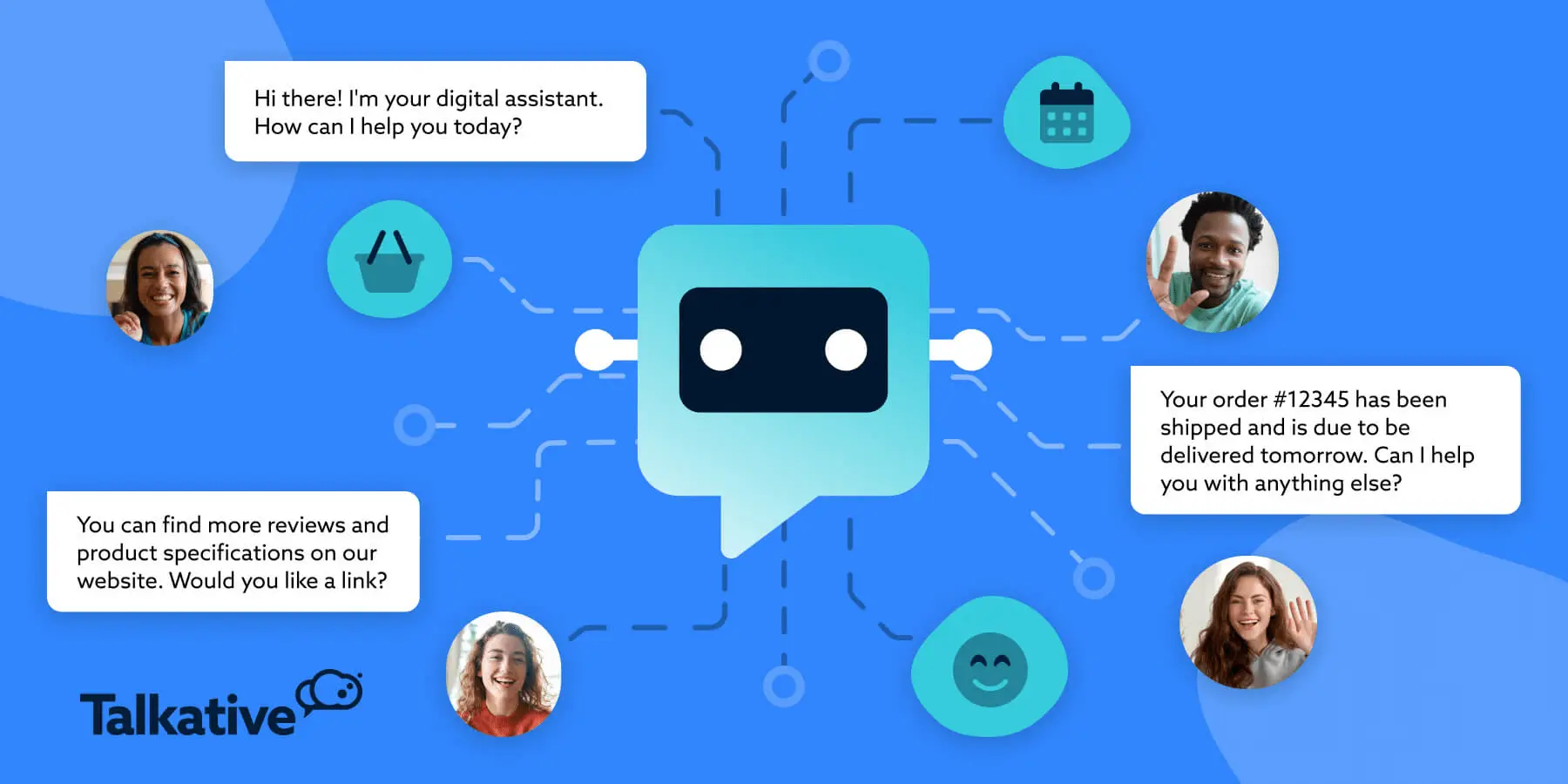
4. Build a comprehensive knowledge base
Whether you’re using AI, a traditional rule-based chatbot, or a hybrid between the two, building a comprehensive knowledge source is key.
By doing this, you’ll significantly boost the capabilities and performance of your chatbot.
This area is where newer, generative AI-powered chatbots really shine.
Most platforms using this technology include an AI knowledge base feature.
AI Knowledge bases offer chatbots a rich source of information and expertise tailored to your brand.
This centralised database enables chatbots to answer a much wider range of customer queries.
It also guarantees that your chatbot delivers consistent and accurate information across all channels.
With Talkative, you can easily create multiple AI knowledge bases using web pages and file-based content.
You can then integrate these repositories of information with our GenAI chatbot.
From there, the bot can answer countless questions about your business, products, and services - using your knowledge base content plus the power of AI.
This approach is how Talkative customer Healthspan were able to achieve the 90% resolution rate for product queries we mentioned earlier.
You can expand and improve your knowledge base over time with Talkative’s AI Knowledge Base Insights.
This report analyses transcripts of chatbot interactions to identify all the user queries that your chatbot failed to answer with its existing knowledge base datasets.
It also summarises how your human agents answer these customer queries during live chat customer interactions.
This enables you to pinpoint areas where your knowledge base needs enrichment or additional content.
In turn, you can make targeted, data-driven updates that will improve the content and performance of your knowledge base over time.
5. Integrate with existing systems & platforms
If you want your chatbot to operate efficiently and provide a unified, more personalized customer experience, you need a solution that can integrate seamlessly with your existing systems and platforms.
This integration into your current set-up is necessary for maximum results and tailored experiences (e.g. personalized recommendations for product queries).
It’s what enables chatbot technology to function seamlessly within your digital infrastructure.
The AI chatbot solution you choose should support integration with your backend systems.
These include your CRM, contact centre software, and any other relevant platforms.
If your chatbot implementation falls short in this area, it may pose a roadblock to successful deployment and effective performance.
That’s why the Talkative solution aims to cover all bases when it comes to compatibility and integrations.
We offer integrations with a range of systems and platforms, including (but not limited to):
- Salesforce
- Mitel
- MiContact Center Enterprise
- Microsoft Teams
- iOS Apps
- Zapier
- Messaging apps - SMS/MMS, WhatsApp, Facebook Messenger
By effectively integrating a chatbot, you’ll create a cohesive digital ecosystem and a seamless, engaging user experience (UX).

6. Complement AI automation with human support
No matter how advanced they are, all chatbots have limitations.
This means they’ll never fully replace your support agents, nor should you want them to.
There will always be instances where a customer or their query needs human intervention.
That’s why we recommend that you ensure your chatbot can escalate to a real person seamlessly when needed.
Providing this capability is critical for overall customer satisfaction and ensuring a positive chatbot UX.
It’ll also increase and improve user engagement with your chatbot.
Case in point, 80% of consumers are happy to use a chatbot if they can switch to a human agent when needed.
You also need to think about when your support teams are online/offline.
If your chatbot is available 24/7 but your agents aren’t, you need to plan for potential customers who need further help outside of operating hours.
This could mean setting up a system where the chatbot collects essential information about the customer and their issue to escalate the case.
The bot can then assure the customer that a human agent will follow up as soon as possible.
By effectively balancing AI automation with human support, you can boost efficiency without compromising user satisfaction.
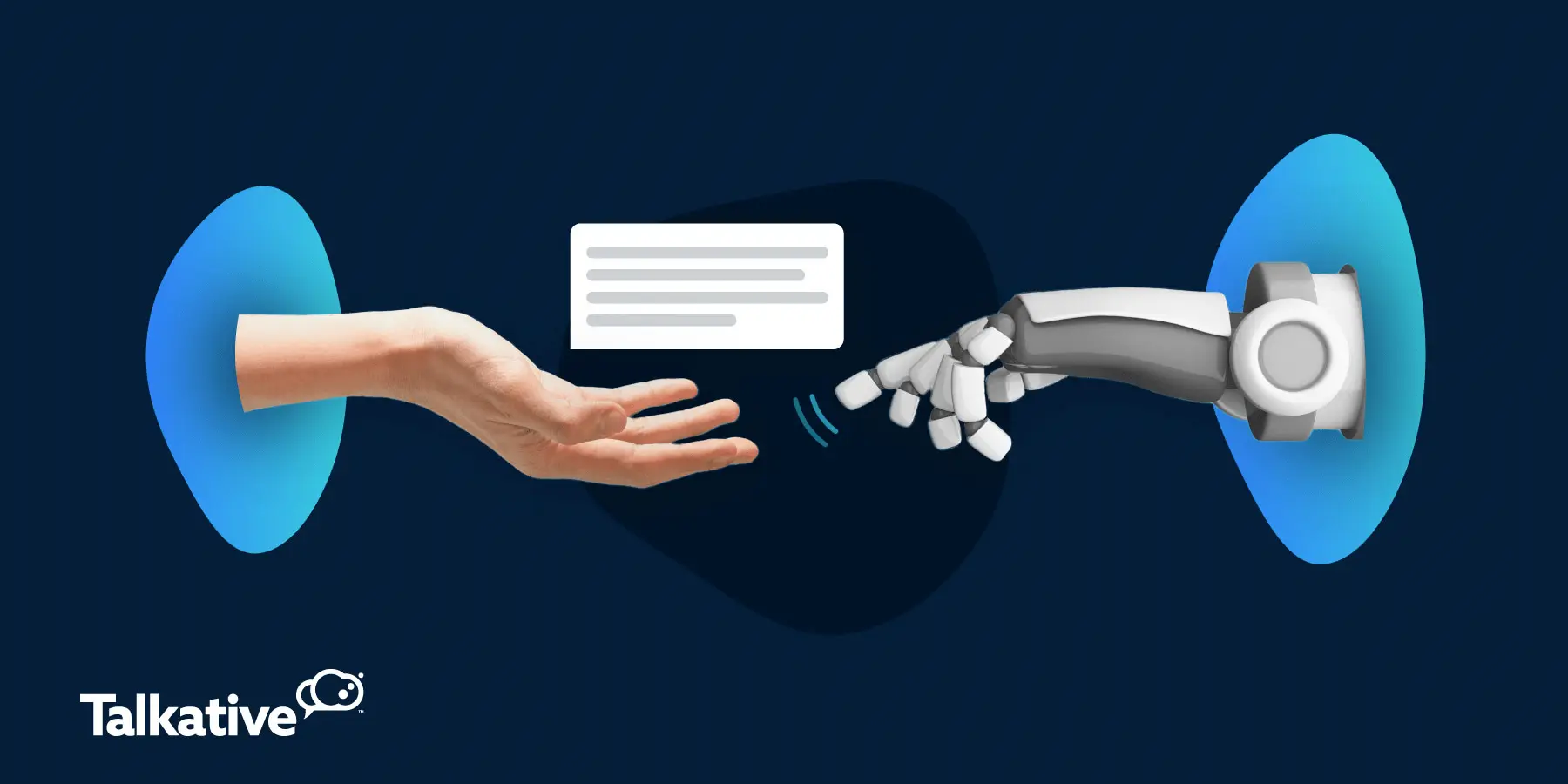
7. Ensure data security & compliance
It’s imperative that you protect their date and privacy during chatbot interactions.
A user interaction with your chatbot may involve sharing relevant customer data, which can pose risks if this information isn’t secure.
What’s more, many chatbot solutions integrate with other company’s AI models (LLMs) to provide more advanced capabilities.
This could be a concern for businesses if they have to share their interaction data with third parties.
The following should be considered when you’re assessing chatbot security:
- Data protection policies: Look for a chatbot platform that has robust policies and controls in place for user data collection, including how data is stored, who can access it, and how it’s used.
- Regular software updates: Make sure your chatbot provider regularly updates its software to address security vulnerabilities and keep its systems up to date with the latest measures.
- Compliance: Depending on your industry or location, you may need to choose a solution that complies with specific regulations, such as CCPA in the US and GDPR in the European Union.
Fortunately, Talkative has strict data security protocols in place to keep you and your customers safe.
These include card masking and PCI compliance for online sales, GDPR and CCPA compliance for data protection, and data sovereignty procedures for global brands.
Additionally, the LLMs we integrate with have strict policies against storing and using customer data.
It means you can guarantee your customer’s data and privacy are thoroughly protected during AI chatbot conversations.

8. Deploy across multiple channels & touchpoints
If you want to maximise the reach and impact of your AI chatbot, consider deploying it across multiple platforms.
By doing this, you’ll make your chatbot services more accessible.
Potential customers will be able to find and use your bot with ease - and, they’ll be able to engage using their preferred communication channel.
That said, it’s not always the best approach to deploy a chatbot on every possible channel straight away.
In our experience, it’s better to start with one or two touchpoints (e.g. your website and app) and then monitor how well the chatbot functions and how it’s received by your customers.
Then, once the bot performs optimally on those channels, you can deploy it across other platforms (e.g., SMS, WhatsApp, Facebook).
With Talkative, you can implement your chatbot across multiple digital touchpoints, including:
- Your website
- Your mobile app
- Facebook Messenger
- SMS
It’s important to be strategic and choose chatbot touchpoints that align with your customer preferences.
Some consumers will favour the immediacy of a website chatbot conversation.
Others might favour the asynchronous nature of messaging apps like WhatsApp.
Use data collection from your analytics/reporting tools and user feedback to identify the channels your customers favour most when contacting your business.
Once you have these findings, you can devise an informed and successful chatbot strategy.
This will ensure your AI chatbot is effectively positioned to meet potential customers where they’re most active and engaged.

9. Conduct testing sessions
Chatbot testing sessions are vital to ensure it’s performing optimally and as expected.
Testing allows you to identify and address any potential issues that may affect user experience or functionality.
Start by creating different test scenarios based on the user interaction and tasks you want it to automate.
Pay attention to how well the chatbot handles these scenarios and whether it delivers accurate, helpful responses to user input.
During testing, focus on various aspects of performance, such as response time, accuracy of information, conversation flow, and the chatbot’s ability to understand customer intents and maintain context.
Additionally, verify how well the chatbot can escalate conversations to human agents when necessary and make sure this transition is smooth.
Usability testing is equally important.
Ask real users or internal team members to interact with the chatbot and provide feedback.
This will give you insights into how intuitive and user-friendly the chatbot feels.
Finally, be sure to test your chatbot across all devices and platforms where it will be deployed.
This ensures consistency and functionality, regardless of how or where your customers access the bot.
By rigorously testing your bot, you can fine-tune its performance, leading to a smoother deployment and long-term chatbot success.

10. Continue to monitor & improve performance
If you want your chatbot to succeed in the long term and improve over time, you must practice ongoing performance management after deployment.
It’ll help you confirm that your chatbot is achieving the best outcomes while delivering a positive customer experience.
You can effectively manage and refine chatbot performance with the following strategies:
- Tracking the right metrics: Identify the chatbot KPIs and analytics that align with your business objectives. Key metrics for chatbot performance include- error and escalation rate, first-contact resolution rate, containment rate, CSAT score, and abandonment rate.
- Refining your knowledge base: As we covered earlier, chatbot analytics and reporting can be used to enrich your chatbot’s knowledge base training. These enhancements will improve the chatbot experience for users as well as its performance.
- Incorporating user feedback: Implement customer feedback mechanisms within your chatbot’s user interface, such as post-chat surveys or ratings. Make sure these tools ask customers about their experience, satisfaction level, and any specific problems they encountered.
Ultimately, the practice of monitoring and refining your chatbot’s performance over time is necessary for long-term success.

The takeaway: Getting started with AI chatbots
A successful chatbot project can be a valuable asset to many businesses.
When used effectively and alongside human-powered support, these systems can boost efficiency, handle complex queries, cut costs, and improve your CX.
But for any chatbot to succeed, it needs to be powered by the right technology.
That’s where Talkative comes in.
Our platform provides a scalable and flexible AI chatbot solution that can be tailored to your specific business needs.
With a Talkative chatbot, you can...
- Choose between an AI-powered or rule-based bot (or a combination of the two - an AI chatbot with rule-based fall-back for maximum efficiency)
- Create multiple AI knowledge bases that make your chatbot an expert in your brand, products, and services
- Meet and serve potential customers across your website, app, and social messaging platforms
- Seamlessly escalate to human agents when needed
- Provide customer support in multiple languages without any additional downloads or plugins
In addition to chatbots and AI solutions, we offer a suite of customer communication channels and capabilities - including live chat, web calling, video chat, cobrowsing, messaging, and more.
Want to learn more?
Book a demo with Talkative today, and check out our interactive product tour.



